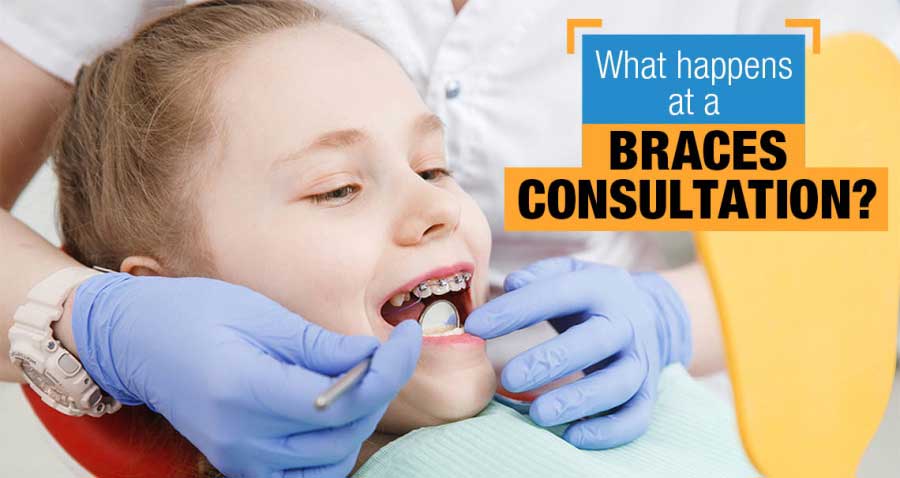Comprehensive Guide to Orthodontics Treatments for Dealing With Dental Misalignments
Comprehending the ins and outs of each procedure, including their mechanisms, benefits, and potential downsides, is critical in making educated decisions regarding one's orthodontic treatment. As we browse with the comprehensive guide to orthodontic treatments for fixing dental misalignments, the detailed information of each method will certainly unravel, dropping light on the path toward a useful and harmonious oral positioning.
Orthodontic Procedures Summary

Routine modifications and tracking are essential parts of orthodontic therapy to make sure progress is on track and to make any kind of essential modifications along the method. By undergoing orthodontic procedures, individuals can not just attain a straighter grin however likewise boost their total oral health and function.
Typical Braces: How They Work
When taking into consideration orthodontic therapies for dental misalignments, typical dental braces stand out as a time-tested approach for remedying teeth placing. Traditional dental braces consist of brackets, wires, and bands that work with each other to use constant stress on the teeth, slowly relocating them into the preferred alignment.
One trick aspect of exactly how conventional braces job is the process of bone renovation. As pressure is applied to the teeth through the dental braces, the bone surrounding the teeth is reshaped to sustain the brand-new tooth placements. This makeover is vital for the long-lasting stability of the corrected positioning. Patients will need regular changes at the orthodontist's workplace to make sure the dental braces continue to apply the appropriate stress for effective teeth motion.
Invisible Aligners: Pros and Disadvantages
Unseen aligners use a very discreet and practical option to conventional dental braces for remedying oral imbalances. These clear, customized trays are essentially unseen when used, making them an enticing option for individuals seeking an extra visually pleasing orthodontic treatment. One of the primary benefits of invisible aligners is their removability, enabling much easier maintenance of oral hygiene contrasted to traditional braces. Patients can remove the aligners before consuming or cleaning their teeth, minimizing the risk of food getting stuck in the appliance and simplifying the cleaning procedure.

Surgical Orthodontic Options
Surgical treatments in orthodontics existing sensible alternatives for attending to complicated oral misalignments that may not be successfully resolved through traditional orthodontic treatments. While undetectable aligners and traditional braces can remedy many orthodontic problems, particular instances need surgical intervention to accomplish optimal outcomes. Surgical orthodontic alternatives are commonly suggested for extreme malocclusions, significant jaw inconsistencies, and cases where the underlying bone framework requires alteration to attain proper positioning.
One usual medical orthodontic procedure is orthognathic surgical procedure, which involves rearranging the jaws to fix useful issues such as problem speaking or chewing. This surgery other is often performed in partnership with an orthodontist who aids align the teeth before and after the procedure. Surgical orthodontics may also involve treatments to reveal influenced teeth, get rid of excess gum cells, or improve the jawbone to create an extra harmonious facial account.
Before thinking about medical orthodontic options, individuals undergo a detailed evaluation to determine the need and possible benefits of such interventions. cumming invisalign. While surgical treatment may seem daunting, it can considerably boost both the feature and looks of the smile in instances where conventional orthodontic treatments fall short
Retainers and Post-Treatment Treatment

Post-treatment treatment entails following the orthodontist's instructions carefully. This might consist of proper oral hygiene methods, participating in follow-up appointments, and wearing the retainers as click for more info recommended. Failure to adhere to post-treatment care directions can lead to relapse, where the teeth slowly return in the direction of link their original settings. Consistent retainer wear, good oral health, and normal oral exams are crucial for keeping the outcomes accomplished with orthodontic surgical treatment and guaranteeing the long-lasting stability of the corrected oral positioning.
Verdict
In final thought, orthodontic treatments use various choices for remedying dental imbalances. Surgical orthodontic choices are available for more severe misalignments. On the whole, orthodontic treatments can properly enhance dental wellness and aesthetic look.
As we navigate through the extensive guide to orthodontic procedures for correcting dental imbalances, the intricate information of each approach will certainly unfold, dropping light on the course toward a functional and harmonious dental placement. - cumming braces
One of the most usual orthodontic treatments is the usage of braces, which are composed of metal brackets and cables that use gentle pressure to slowly change teeth into the wanted setting.When thinking about orthodontic therapies for oral misalignments, typical dental braces stand out as a tried and true approach for dealing with teeth placing. In addition, unseen aligners might not be ideal for complex orthodontic concerns that need more considerable teeth motion, as they are commonly suggested for light to modest cases. Retainers are custom-made orthodontic gadgets developed to hold teeth in their fixed positions after the conclusion of orthodontic treatment.